
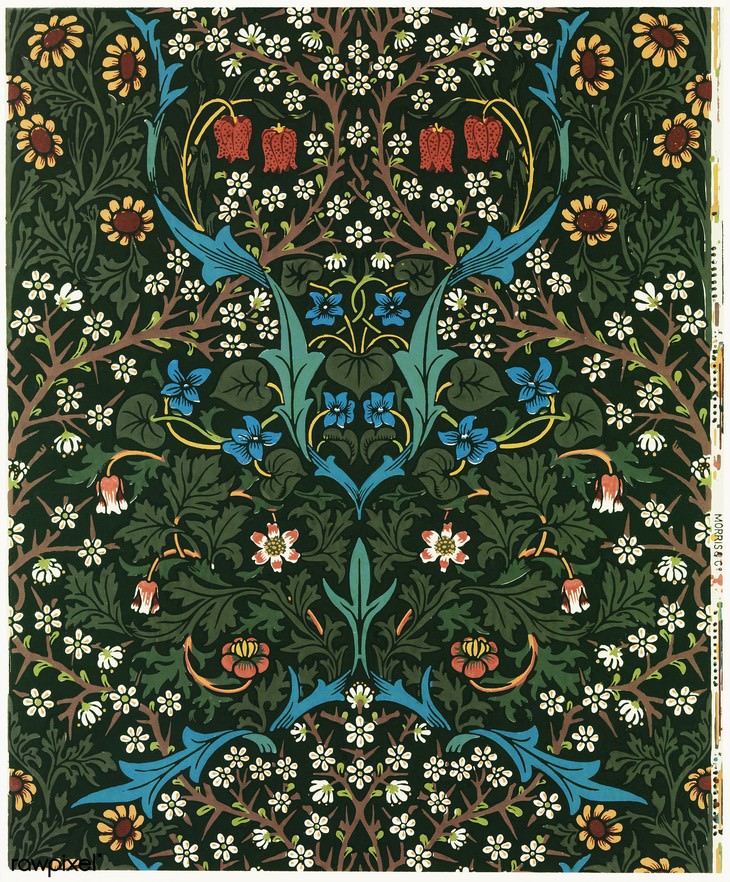
LOVE is enough: though the World be a-waning,
And the woods have no voice but the voice of complaining,
Though the sky be too dark for dim eyes to discover
The gold-cups and daisies fair blooming thereunder,
Though the hills be held shadows, and the sea a dark wonder,
And this day draw a veil over all deeds pass'd over,
Yet their hands shall not tremble, their feet shall not falter;
The void shall not weary, the fear shall not alter
These lips and these eyes of the loved and the lover.
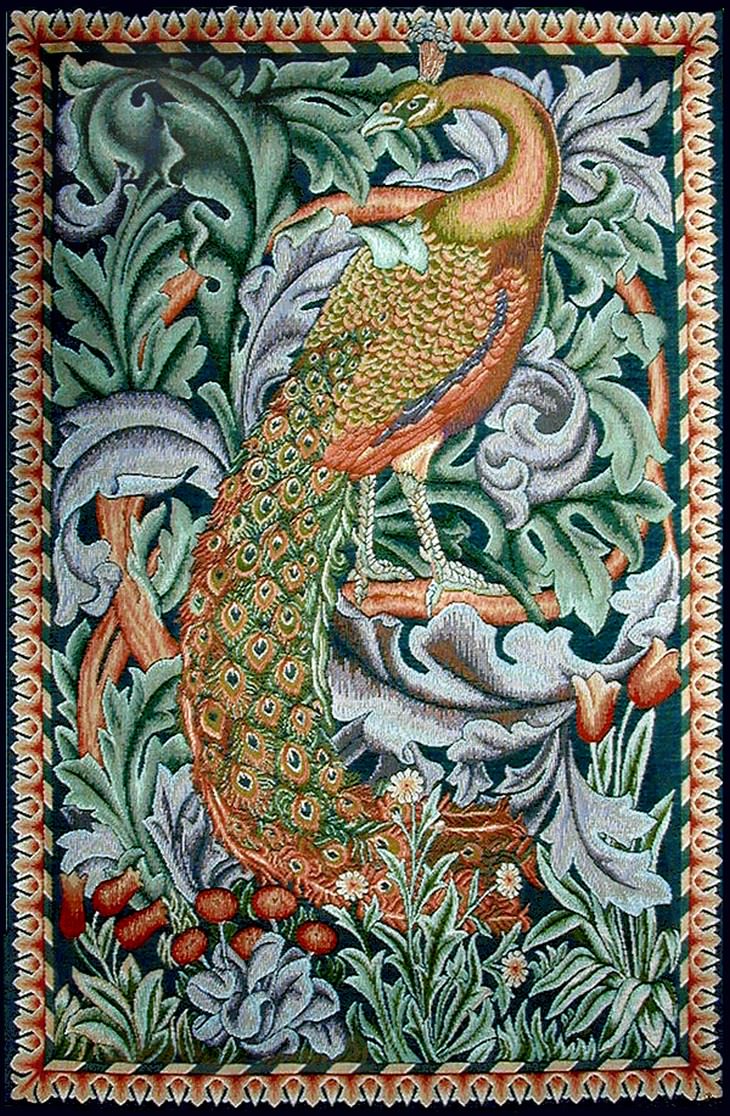
William Morris "The Forest" tapestry (detail) 1887
Considered to be one of the masterpieces of the poet, the play Love is enough is an unusual story of love that has no limits. The excerpt above is by far the most popular one. This part of the play is about a couple walking through a forest in the dark. Despite the very alarming circumstances, the couple moves on fearlessly.
They persevere despite the darkness. The darkness is a metaphor of the unknown future, as the author uses such words as “veil” or “a sea of dark wonder” to describe it. But the last 3 lines attract my attention the most because of the interesting choice of words. Instead of portraying love as a guiding light, a force that can help them find their way through the darkness, the author phrases things differently.
Morris points out that they mustn’t falter nor fear the dark. This sense of obligation conveyed through several repetitions of the phrase “shall not” in the poem is a reflection of the strong moral code and ethical duty most Victorian writings share. Because of the strong accent on morality and Christian beliefs at the time, it turns out that the couple perseveres fearlessly because love obliges them to do so, and not because of some romantic or emotional reasons.
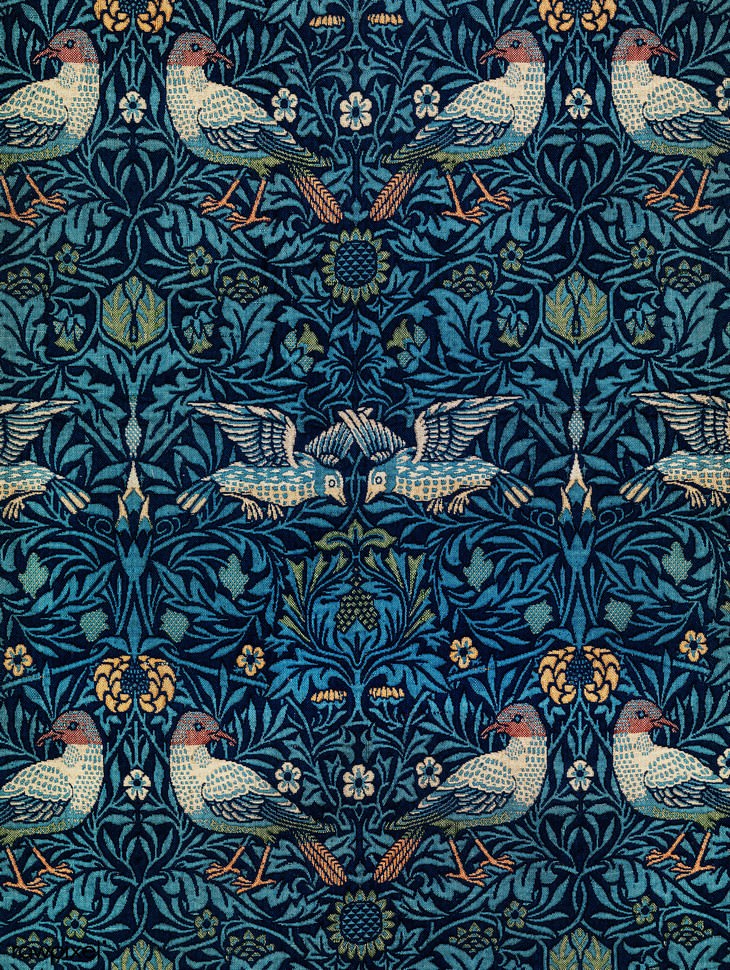
Spring went about the woods to-day,
The soft-foot winter-thief,
And found where idle sorrow lay
’Twixt flower and faded leaf.
She looked on him, and found him fair
For all she had been told;
She knelt adown beside him there,
And sang of days of old.
His open eyes beheld her nought,
Yet ’gan his lips to move;
But life and deeds were in her thought,
And he would sing of love.
So sang they till their eyes did meet,
And faded fear and shame;
More bold he grew, and she more sweet,
Until they sang the same.
Until, say they who know the thing,
Their very lips did kiss,
And Sorrow laid abed with Spring
Begat an earthly bliss.
Another love poem, Spring’s Bedfellow is a legend about Sorrow and Spring falling in love. You know that feeling when after a long and gloomy winter you suddenly become revived and optimistic when spring arrives?
Morris imagined that this happens because one day Spring, a beautiful muse, sought out Sorrow in the depths of the woods and made him fall in love with her. Once they fell in love, sadness vanished from the world and was replaced by bliss.
The story is charged with metaphors hinting to intimacy and romance, which was quite frivolous for Victorian standards and surely made many Victorian ladies blush.
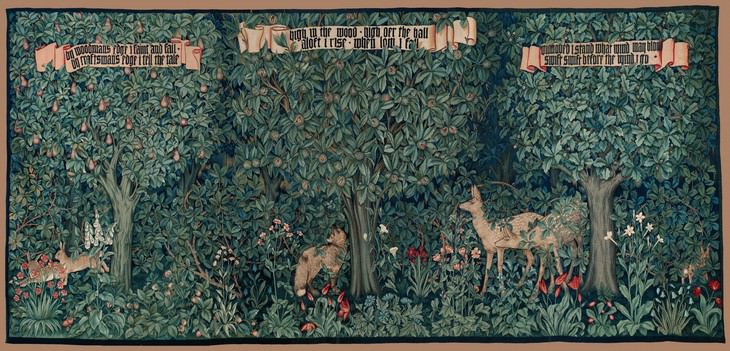
Surprisingly enough, the message of this poem is that of an idealized vision of power. The image of the lion is deeply symbolic. The main characteristic of the animal is not its excellent hunting skills or a beautiful mane, but rather its position as the king of all animals. And though nature and animals are featured in most of Morris' artworks and poems, they usually simply create a backdrop, a canvas for powerful symbols and metaphors, often Biblical in nature.
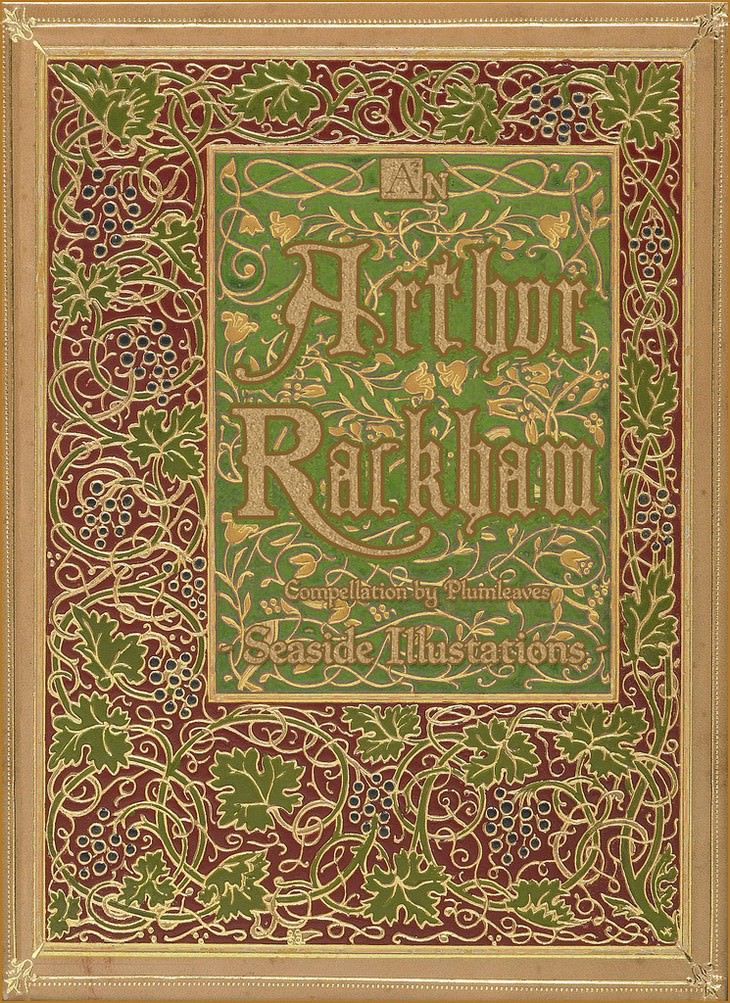
William Morris design. Gustav Fritzsche Publisher's book binding 1893-94
The idea of royal power, for example, becomes clear from the last line of The Lion poem, when all the other beasts stop and neither “ride nor haste”. All they can do in sight of their impressive leader is “sit and see”. So, the poem is about an idealistic lion, meaning a born leader, under the rule of whom everyone becomes calm and content. Critics have even supposed that Morris may have alluded to God himself in this poem and corresponding tapestry.
Silk Embroidery.
Lo silken my garden,
and silken my sky,
And silken my apple-boughs
hanging on high;
All wrought by the Worm
in the peasant carle’s cot
On the Mulberry leafage
when summer was hot!
This last poem was created to complement a silk embroidery consisting of 3 parts that Morris was commissioned to execute for a wealthy client (similar to the Greenery tapestry we showed above). The poem itself is an idealistic picture of an orchard in the summer. But it's not an ordinary orchard...
The author mentions an apple that was “all wrought by the Worm”, which is most likely a Biblical reference to the myth of creation. Hence, the orchard Morris depicts in the poem is no other than the beautiful garden of Eden itself. This idea can also be supported by the fact that Morris was a religious man and repeatedly used Biblical topics and imagery in his art and poetry. One such example can be seen below.
To conclude, let us just say that William Morris was truly a man of his century and an unbelievably talented and visionary person.
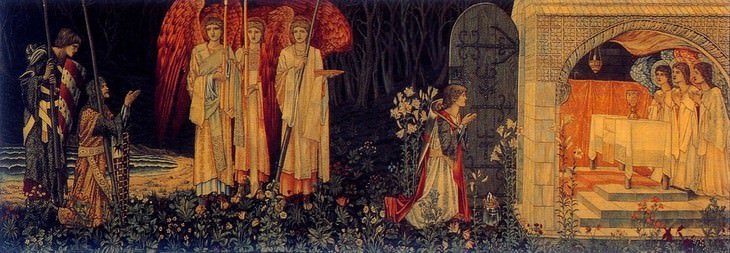
The Attainment: The Vision of the Holy Grail to Sir Galahad, Sir Bors, and Sir Perceval. Number 6 of the Holy Grail tapestries woven by Morris & Co. 1891-94.
Image source: plum leaves, plum leaves, Rawpixel Ltd, Rawpixel Ltd., plum leaves